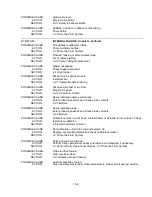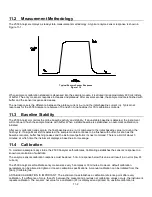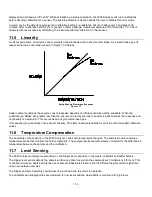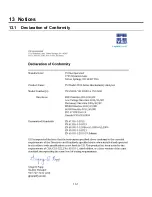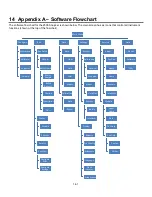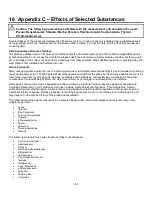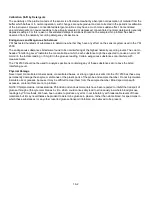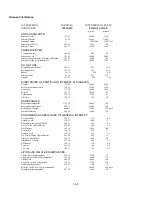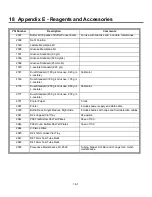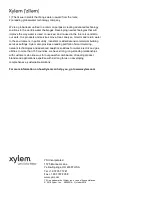
16-1
16 Appendix C – Effects of Selected Substances
Caution: The following preservatives interfere with the measurement and should not be used:
Phenol, Benzalkonium Chloride, Methyl Paraben, Perchloric Acid, Sodium Azide, Thymol,
Trichloracetic Acid.
Several classes of chemicals can damage the YSI sensor system or cause erroneous readings. Some substances such
as triglycerides, which are interferences for photometric sensor systems, do not interfere with the 2500 electrochemical
sensor system.
Side Substrates of Glucose Oxidase
The glucose oxidase used in YSI glucose membranes reacts with beta-D-glucose and with certain analogs differing only
at carbon position 2 or 6. A specimen containing these substances would give a falsely elevated reading, but there would
be no damage to the sensor nor any effect on readings from other samples. Side substrate response is greatest when the
membrane is first installed and declines with use.
Reducing Agents
Many reducing agents would give rise to a false signal current (and falsely elevated reading) if they succeeded in reaching
the sensing anode of the YSI 2500 probe. Most of these are excluded from the probe by the cellulose acetate layers of the
membrane, However, thymol, phenols, anilines, hydrazines and hydrazides, hydroxylamines, oximes and a few other
compounds of molecular weight below 150 which are cationic or uncharged in neutral solution can interfere.
Homologues and isomers may be expected to behave similarly, except that relative response generally declines with
increasing molecular (or ionic) bulkiness. Hydrogen Sulfide, Hydrazine, Methylhydrazine, Phenylhydrazine, Oxamic
Hydrazide, Hydroxyethylhydrazine, Acetone Oxime, Hydroxylamine and Sodium Borohydride are also known to give a
significant relative response. Relative response to reducing agents may vary from membrane lot to membrane lot, and
may depend on the service history of the probe and membrane.
The following reducing agents may result in an elevated background current when present at low levels (only a few
milligrams per liter):
•
Aniline
•
Catechol
•
Ethyl Carbazate
•
Formic Acid Hydrazide
•
Guaiacol
•
2-Mercaptoethanol
•
Phenol
•
Resorcinol
•
Thiocarbohydrazide
•
Thiourea
The following materials may cause trouble at higher concentrations:
•
2-Amino-4-nitrophenol
•
p-Aminophenol
•
p-Cresol
•
N.N-Dimethylhydroxylamine
•
4-Ethylphenol
•
Hydroquinone
•
2-Hydroxybenzyl Alcohol
•
Isoniazid
•
Methimazole
•
Oxalyl Dihydrazide
•
p-Phenylenediame
•
Pyrogallol
•
Sodium Azide
•
o-Toluidine
Summary of Contents for YSI 2500
Page 1: ...USER MANUAL 525021 YSI 2500 Biochemistry Analyzer OPERATIONS AND MAINTENANCE MANUAL...
Page 34: ...5 11 8 The Stat sample results are displayed on the Run Stat tab Stat sample results...
Page 88: ...13 1 13 Notices Declaration of Conformity 13 1...
Page 96: ...17 1 17 Appendix D Line Power Cord and Plug Wiring United Kingdom United States Europe...



